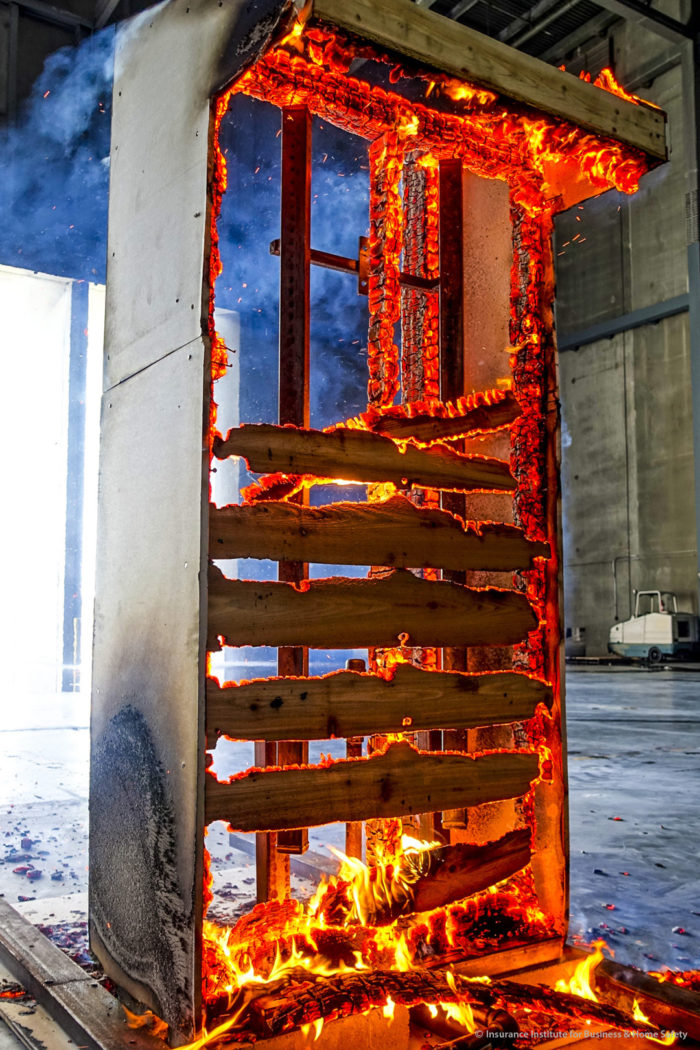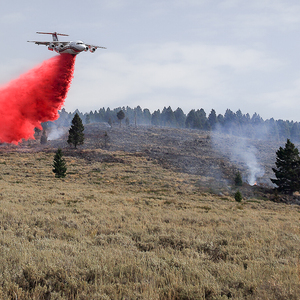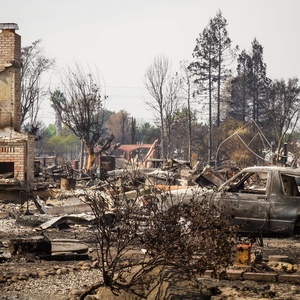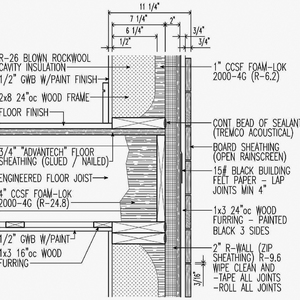
Image Credit: IBHS
Will Welch has chosen to build his high-performance house in Nederland, Colorado. The site is at the border of Climate Zones 6 and 7, and it poses some challenges: it’s at an elevation of 8,600 feet; the area gets a generous amount of snow and wind; and the number of heating degree days tops 8,800 a year.
But Welch has one more concern: the threat of wildfires.
“My priorities are a tight building envelope with high-R walls and more environmentally friendly materials that also resist fire, but I’m also trying to get the most bang for the buck on those materials,” Welch writes in a post at the Q&A forum.
His plans currently call for a 2×6 framed wall rather than a double-stud wall, mainly as a way of preserving all the interior space he can. Wall cavities would be insulated with dense-packed cellulose or a mixture of closed-cell spray foam and cellulose, with 5/8-inch drywall on the inside and 5/8-inch plywood sheathing on the outside. On the exterior, Welch would use 4 inches of mineral wool insulation, covered with a mix of corrugated metal and fiber-cement siding.
“I’m leaning away from rigid foams for the exterior insulation because a number of them either don’t perform well in fires or in the cold, have thermal drift over 5-10 years, or are rough on the environment,” Welch says. “That said, exterior mineral wool doesn’t look nearly as cost-effective as something like recycled rigid foam.”
Welch has three questions:
- Is his choice of mineral wool over rigid foam reasonable?
- Given the climate, what is the best location for the water-resistive barrier (WRB)?
- Should he add 2 inches of closed-cell spray foam to the inside face of the wall sheathing to increase the wall’s R-value?
That’s the topic for this Q&A Spotlight.
Weekly Newsletter
Get building science and energy efficiency advice, plus special offers, in your inbox.

This article is only available to GBA Prime Members
Sign up for a free trial and get instant access to this article as well as GBA’s complete library of premium articles and construction details.
Start Free TrialAlready a member? Log in















7 Comments
Why not ICF?
Just curious as to why ICF with a 6" concrete core was not used as an option?
The concrete wall structure is fire rated for 4 hours instead of 20-30 minutes as most wood frame walls are. You can then add synthetic stucco to the exterior to fireproof the EPS. There are NO weep screeds, exposed cavities, drainage planes, etc. in the wall assembly to have embers travel into. Synthetic stucco leaves no gaps for embers or bugs to get into.
Plus in areas of high winds, ICF is rated for 200mph winds. No wind racking in an ICF home. My ICF house is dead silent in 50mph winds. I live in wildfire country and received discounts from my home owners insurance due to the concrete wall. Plus I have a Class A fire rated standing seam metal roof.
Response to Peter L
Peter,
This article summarizes a Q&A thread. In the original thread, a GBA reader named Will Welch announced that he was planning to build a house with 2x6 walls. He asked a few specific questions, and the GBA community did our best to answer his questions.
Other readers, at other times, have announced their plan to build a house with ICF walls. It's certainly one way to build. It just wasn't Will Welch's way.
Is it really possible to ignite furring strips?
John Straube was here (Sonoma County, CA) a couple weeks ago presenting on continuous insulation and someone asked him if furring strips could catch fire. He said "no, a 3/4" furring strip just doesn't have room to catch." He went on to say maybe if the gap was a couple inches, maybe. It was an important answer to me since I have remodeled my entire house with continuous foil-faced poly-iso, 3/4" thick furring strips, and HardiPlank siding. The thought that I had inadvertently introduced an ignition source was disconcerting, so I was glad to have John confirm my thought. But it would be nice to hear another expert poke a hole, or possibly confirm, this fear.
@Christopher
Building Science Corp.
https://buildingscience.com/documents/building-science-insights/bsi-098-great-fire-london
Relevant quote from Building Science Corp. document
In the document that John Clark provided a link to, Joe Lstiburek wrote:
"The fire implications of too large of an air gap behind a cladding are huge. Air flowing behind a cladding can feed a fire in the cladding or feed a fire in the insulation behind the cladding. Both happened in spades in the Grenfell Tower. The buoyancy of fire heated air flowing upwards in the air gap behind the cladding acted like a blow torch or a bellows feeding the fire. When the air gap is small…less than ¾ inch…the friction from both surfaces bounding the air gap limits the air flow. The boundary layer on both surfaces is an effective fire stop."
Thank you John and Martin for the confirmation
I do recall Joe's comments about Grenfell, so that's some consolation my memory isn't totally failing.
Steel siding
My build is 2x6 0n 16" with 1/2" ply, 4" reclaimed foam, 2" sprayed closed cell (dense pack unavailable in this part of Ontario), unventilated cath with 6" foam exterior and 2" sprayed, Vic West roof. Nice to hear the comments on strapping.
Looking into Tru Log steel siding out of Colorado, anybody used it? Original plan was Hardie.
Very happy with my build, quiet and stable interior temps.
Log in or become a member to post a comment.
Sign up Log in